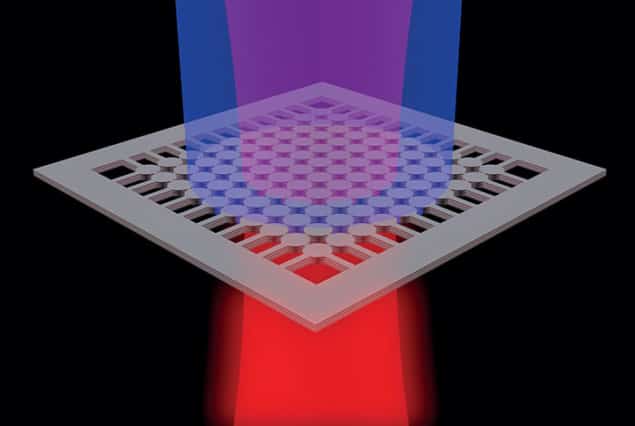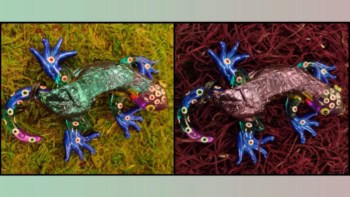
A new type of compact and highly efficient laser that is compatible with optical telecommunications has been created by Boubacar Kanté and colleagues at the University of California, San Diego, in the US. The tuneable device, which uses a wave phenomenon first proposed more than 80 years ago, can output light with a range of different beam profiles. According to Kanté, the laser could someday be used in a wide range of applications including spectroscopy and optical trapping.
The wave phenomenon exploited by the device was first suggested in 1929 by John von Neumann and Eugene Wigner, who calculated that certain quantum systems can have bound states above the continuum threshold. The discovery of these “bound states in the continuum”, or BICs, was surprising because this threshold is normally the energy required to break apart a quantum system – ionizing an atom, for example.
No one paid much attention to the result until the 1970s when physicists suggested that BICs could exist in regular arrays of semiconductor materials. More recently, it has been realized that BICs are a general property of all waves and can occur in classical systems based on light, sound and microwaves.
A BIC could also function as a very high-quality optical “supercavity” that can confine light to regions as small as several microns. Making high-quality yet small cavities in conventional lasers, in contrast, is hard because they need to be formed from two opposing mirrors that bounce light back and forth through a lasing medium. Shrinking the cavities is tricky, making it a challenge to create tiny lasers that are very efficient at producing high-quality light.
Tiny cylinders
Now, however, Kanté and colleagues have made tiny lasers that are based on BICs created within semiconductor structures as small as 10 μm across. The structures are square arrays of tiny cylinders made of indium-gallium phosphide. Normally, BICs arise in systems in which the lattice repeats infinitely in at least one direction. Kanté and colleagues got around this restriction by creating a cavity that supports several standing waves and then adjusting the structure so it best resembles a BIC.
The researchers made several different arrays – containing 8 × 8 to 20 × 20 elements and comprising cylinders with radii in the 500–550 nm range. They were able to create lasers with all of these arrays.
Kanté told Physics World that the use of a BIC supercavity allows the devices to efficiently produce high-quality laser light – even when the array is tiny. Furthermore, light is emitted vertically from the surface of the array, which offers advantages during the production process. Another plus for the laser is that it works at room temperature. And because the laser is based on a simple semiconductor array, its overall size can be easily changed – with larger arrays producing more light.
Compact spectroscopy
Kanté also points out that the colour of the laser light can be fine-tuned by adjusting the size of the semiconductor cylinders in the array. This means it could useful for creating compact spectroscopy instruments such as the Tunable Laser Spectrometer, which is used by NASA’s Curiosity rover to study the chemical composition of the Martian atmosphere.
Another facet of the new laser is that it can create “vector” beams of light, which have specific profiles such as a Gaussian distribution or a doughnut shape. Such light can be used to trap, manipulate and study tiny objects such as bacterium and red blood cells. Vector beams can also carry orbital angular momentum and this “twisted light” has a number of applications including increasing the data capacity of optical telecommunications networks.
The BIC lasers are described in Nature.


